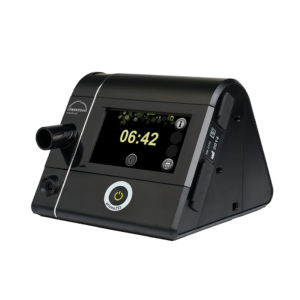What is OSA?
A survey conducted by AIIMS in 2013 reveals that at least 9.3% of the adult population in urban and metro areas in India suffer from sleep apnea. Sleep apnea is a condition where a person stops breathing in his or her sleep. One of the most common forms of sleep apnea is Obstructive Sleep Apnea (OSA). OSA is a result of an airway in the throat or nose becoming obstructed.
During normal sleep, you are relaxing and so are the muscles in the upper part of your throat. However, the passage remains open just wide enough for a free flow of air to the lungs.
When there is a partial obstruction in the airway, this muscles collapses and you are likely to snore loudly in your sleep.
However, some individuals have very narrow airways and when the throat muscles relax, airflow to the lungs get completely obstructed. Consequently, the person may stop breathing for as long as 10 seconds. This inability to breathe is sensed by the brain causing it to wake from deep sleep to stimulate the muscles in the throat and forcefully open the airway. This in turn, leads to a person either choking or gasping for air. This merely describes one episode. These episodes are likely to occur repeatedly throughout the night resulting in poor sleep quality and excessive daytime sleepiness.
Warning signs and symptoms of sleep apnea include:
Frequent silences during sleep
Choking or gasping during sleep
Loud snoring
Sudden awakenings
Daytime sleepiness
Usually, people are not aware of whether they have problems breathing while sleeping. However, if you feel that you show any of the following symptoms it is advisable to consult a sleep physician:
The most common symptoms are –
- Loud snoring
- Choking or gasping during sleep
- Excessive daytime sleepiness
Other symptoms include –
- Morning headaches
- Feeling tired even after sleep
- Dry mouth after sleep
- Obesity
- Easily irritable
- Depression
As part of the diagnosis, the doctor will check your nose or mouth for extra or large tissues and prescribe a polysomnogram. A polysomnogram, or a sleep study, uses equipment that monitors brain waves, muscle tension, eye movement, breathing, heart rate, oxygen level in the blood and sounds of snoring and gasping.
Undiagnosed sleep apnea can lead to following health risks:
- High blood pressure
- Stroke
- Heart failure, irregular heartbeat
- Diabetes
- Depression
The are four common treatment options for Sleep Apnea:
- Behavioural changes: For mild cases of sleep apnea you may attempt to lose weight (if overweight), sleep on your side, avoid consumption of alcohol and smoking
- Continuous Positive Airway Pressure (CPAP): This is the most common treatment for sleep apnea. It involves using a machine that pumps a steady stream of air into your nose, using a mask, forcing the airway to remain open
- Oral appliances therapy: An oral device that fits in your mouth may be used to keep the airway open. These devices bring the jaw forward, hold the tongue in position to prevent it from falling back into the airway
- Surgery: Nasal cavity improvement, throat improvement and reduction of swollen tissue near the septum are a few surgery options to treat sleep apnea
Post diagnosis, you can choose from an array of CPAP or BiPAP machines or any other Sleep Therapy systems to resolve these issues. Here are some great options to treat Sleep Apnea.







